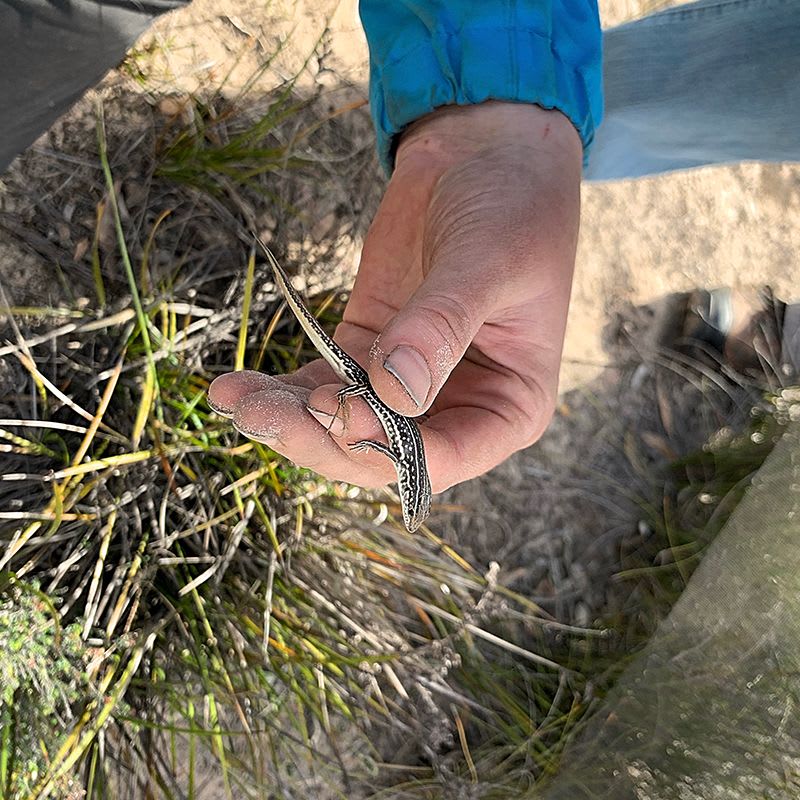
Herpetology Finds

Catarina Murphy
Little Desert National Park VIC Bush Blitz | Oct 2018
The dreaded iPhone default alarm tone “Radar” sounded off. I switched on my phone. 5:00am. It was time for us to get up.
You know you are up early when you are awake and ready to leave before the sun rises. Today, we had the pleasure of following and assisting the two Herpetology teams from Museums Victoria at their pitfall and funnel traps. Oh, and the added pleasure of watching the sunrise! I learnt that it is really important to be up early to check the traps so that the animals do not overheat and experience hyperthermia. If you are not familiar, pitfall traps are a sampling technique that utilises a plastic container - dug into the soil and level with the surface - to trap reptiles, small mammals, amphibians and invertebrates. They allow scientists to examine and describe species occurrence, relative abundance, community structure, and spatial and temporal distribution patterns. Scientists can then compare the abundance of species in different habitats and study activity patterns (DBCA, 2018).
Another check of the phone. 6:00am. And we were off. The teachers split into two groups and headed out into the field with two locations on our map: Little Desert National Park and Urimbirra Co-operative Central Block in the Wimmera district of Victoria. It was a bumpy ride to Little Desert National Park in our 4x4; I thoroughly enjoyed it. We were able to watch and help the scientists clear the pitfall and funnel traps. The scientists used a stick to search through the pitfall traps. The funnel traps could be held into the sky to be searched. On our morning trip, we found skinks, pobblebonk frogs, legless lizards, scorpions, beetles and dunnarts - just to name a few.

After returning for lunch, we swapped locations and travelled to Urimbirra. We were lucky enough to meet some of the original owners of the Urimbirra Co-operative land. The Urimbirra Co-operative - formed in 1973 - bought 400 hectares of the Little Desert region in efforts to conserve the land from farming. The diversity of the area was unbelievable. Unfortunately, this was the last day in the field for the Herpetology teams so we assisted the scientists in packing up the traps. We were a well-oiled machine by the end speedily rolling up the mesh and pegs and clipping up the funnel traps. Our forearms definitely received a good work out.
Whilst searching in one of our final sites, we found a unique species of the Ctenotus genus that had yet to be found in Little Desert. The genus Ctenotus contains the largest group of lizards in Australia with approximately 100 species. They are commonly known as ‘comb-eared skinks’; they have a row of small scales on the front of their ears. The genus Ctenotus are often dark coloured with stripes and/or spots and have smooth scales, long limbs with five digits and long tails. I was lucky enough to help sterilise the scissors and catch the tail clipping into the specimen jar for this species. The tail clippings will be used for genotyping as simultaneously the lizards regenerate their tail. Did you know that lizards can drop their tail as a self-defence mechanism? How cool!

Find out more about dry pitfall traps here:
Department of Biodiversity, Conservation and Attractions. (2018). Dry pitfall trapping for vertebrates.
Find out more about the genus Ctenotus here:
Museums Victoria Sciences Staff. (2017). Ctenotus Skink in Museums Victoria Collections.

